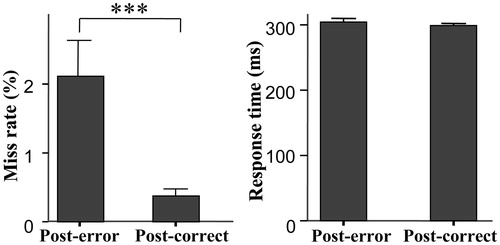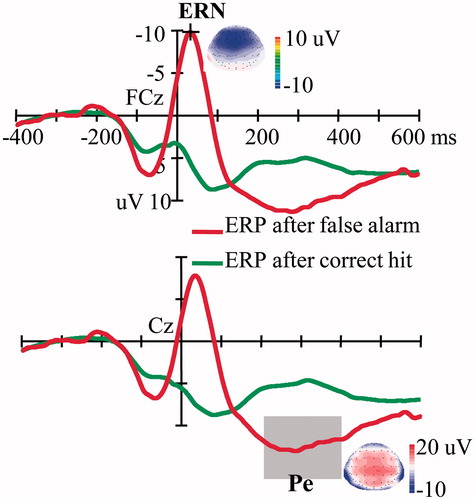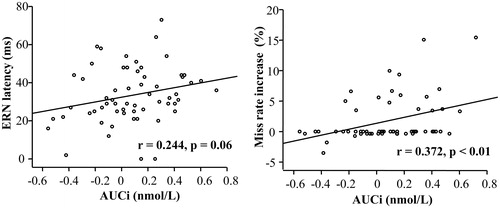Figures & data
Figure 1. Comparison of behavioral performance between the post-correct and post-error condition (mean values and standard errors). The left panel shows that the post-error condition had a significantly higher miss rate than the post-correct condition. Post-error: post-error condition; post-correct: post-correct condition; ***p ≤ 0.001.

Figure 2. Cortisol data after awakening, averaged over two days. The x-axis represents the time points of saliva sampling, and the y-axis represents the averaged raw cortisol levels across two days. The error bars represent the standard error of the mean.

Figure 3. ERPs time-locked to the false alarms and correct hits. The topographic maps show the scalp distributions of the peak of the Ne/ERN component and the mean amplitude of the Pe component (200–400 ms). Ne/ERN, Error-related negativity; Pe, error positivity.

Figure 4. Scatter plots showing the bivariate correlation between the AUCi and the peak latency of the measured ERN (left) and the miss rate increase (post-error minus post-correct condition) (right) (n = 60). There were many “floor” values in the right panel (0% change); thus, we performed the correlation analysis again without these floor values (n = 33), and similar results were achieved: r = 0.49, p < 0.01. AUCi, The cortisol area under the curve with respect to the increase; ERN, error-related negativity.

